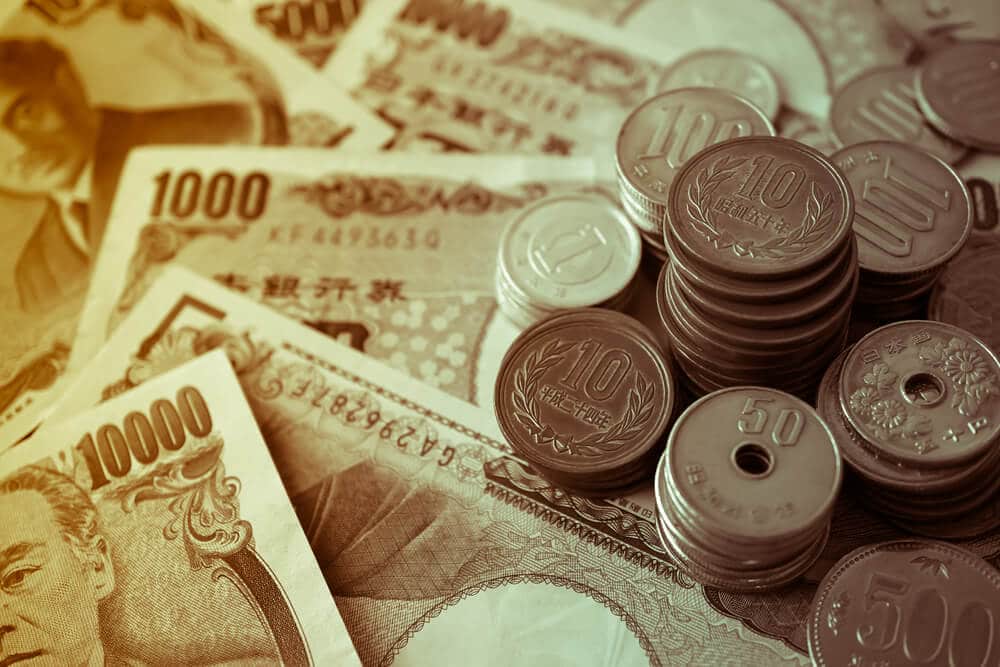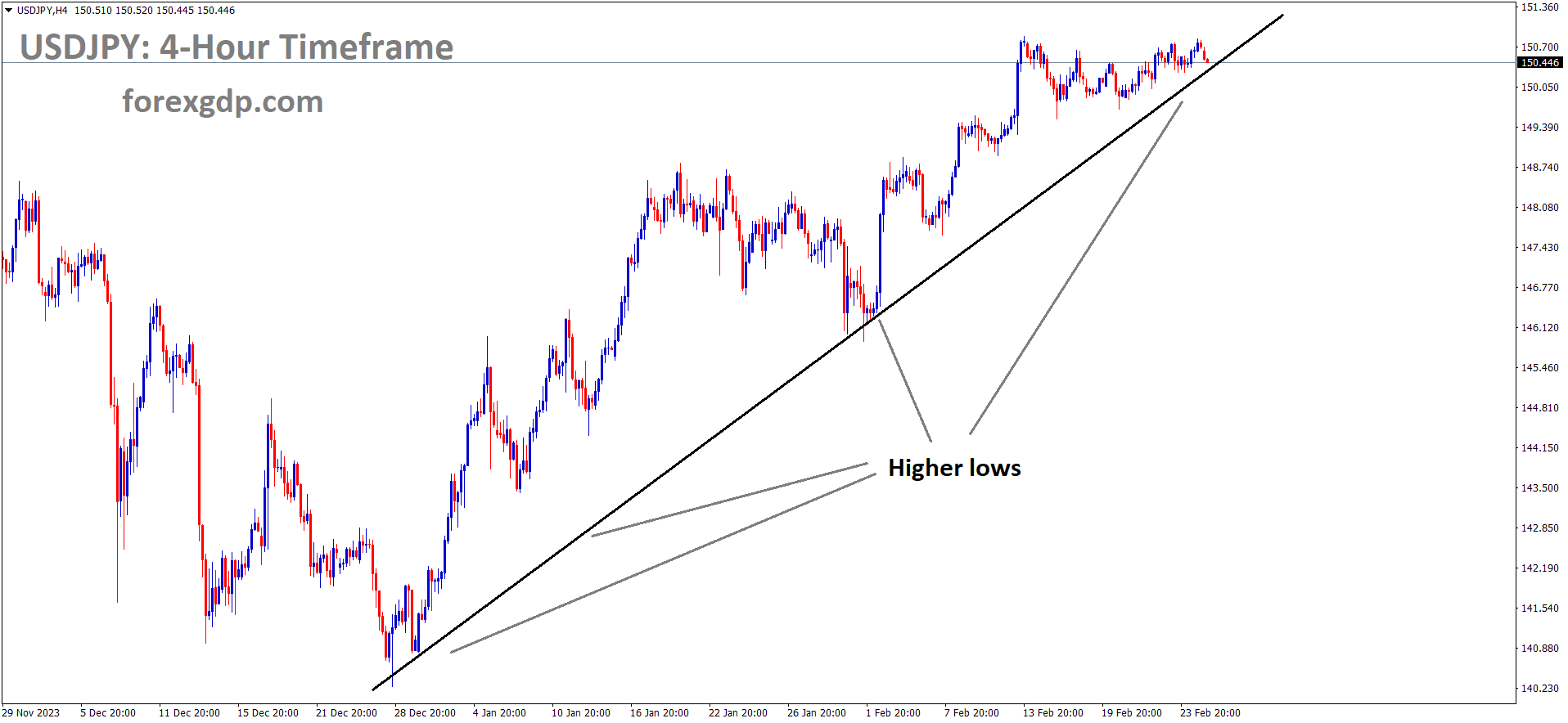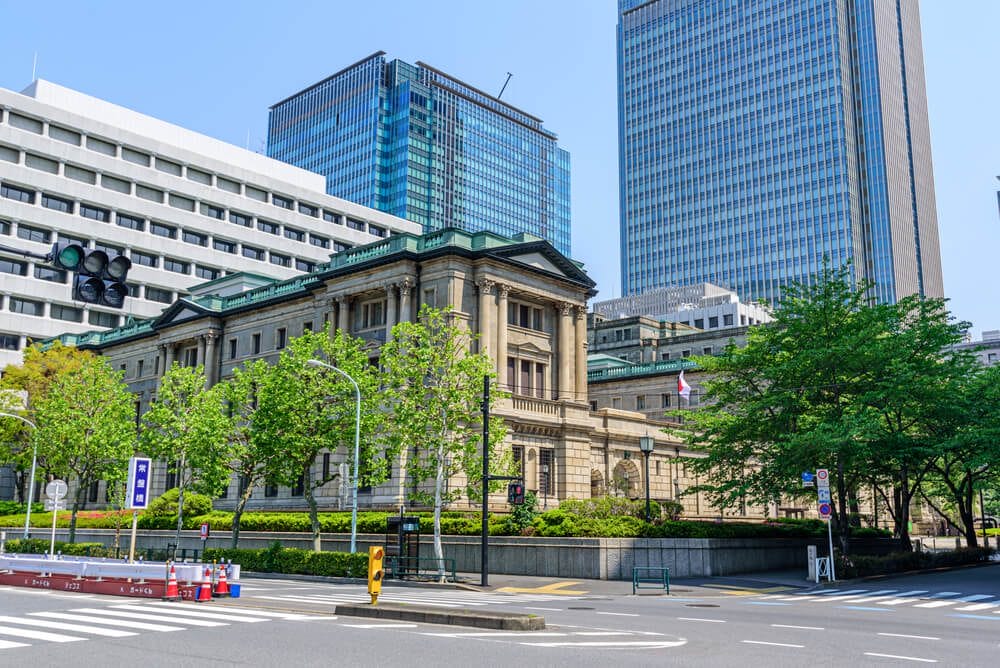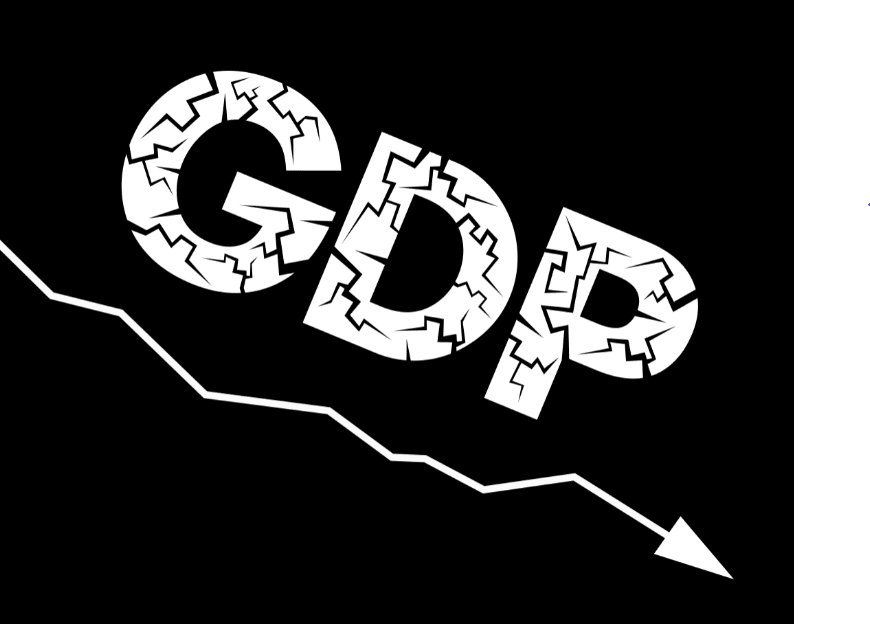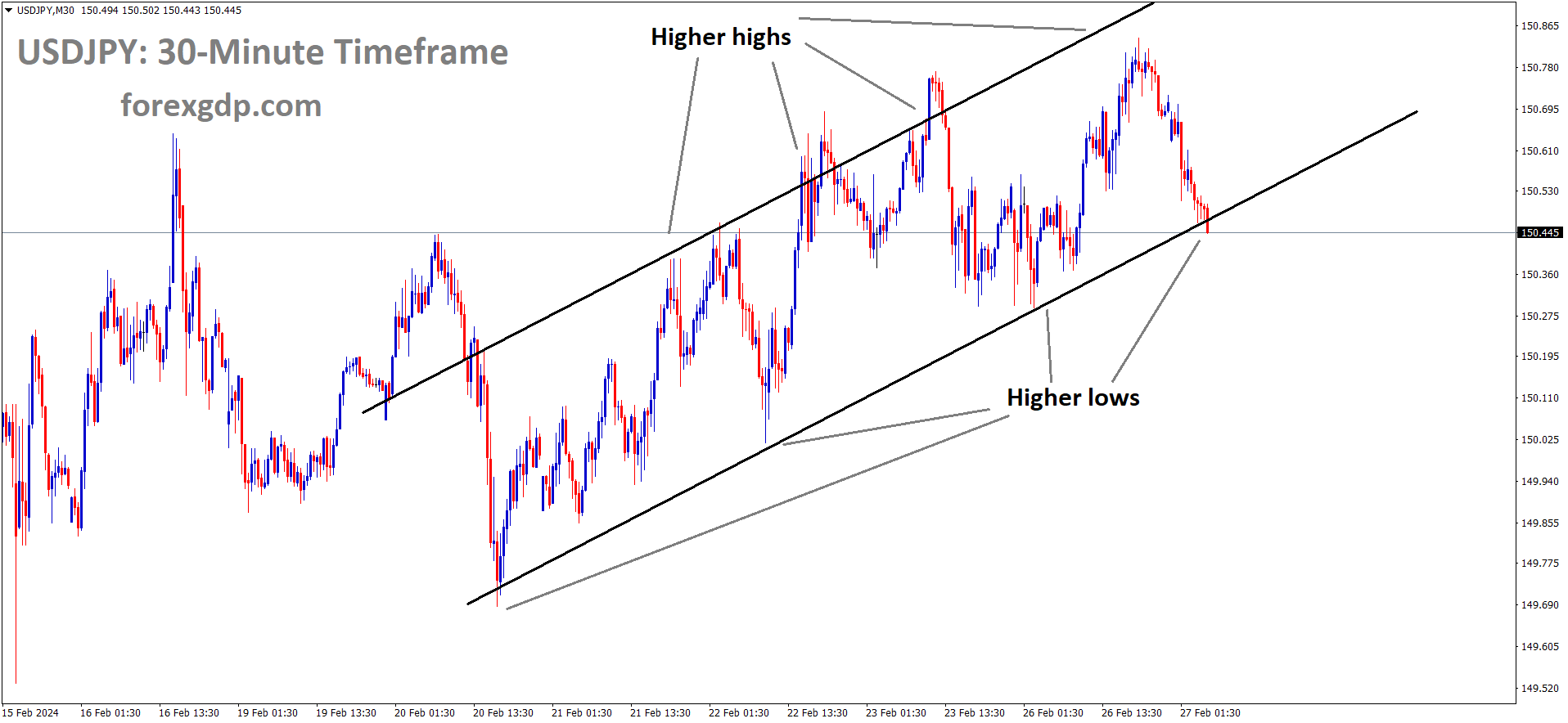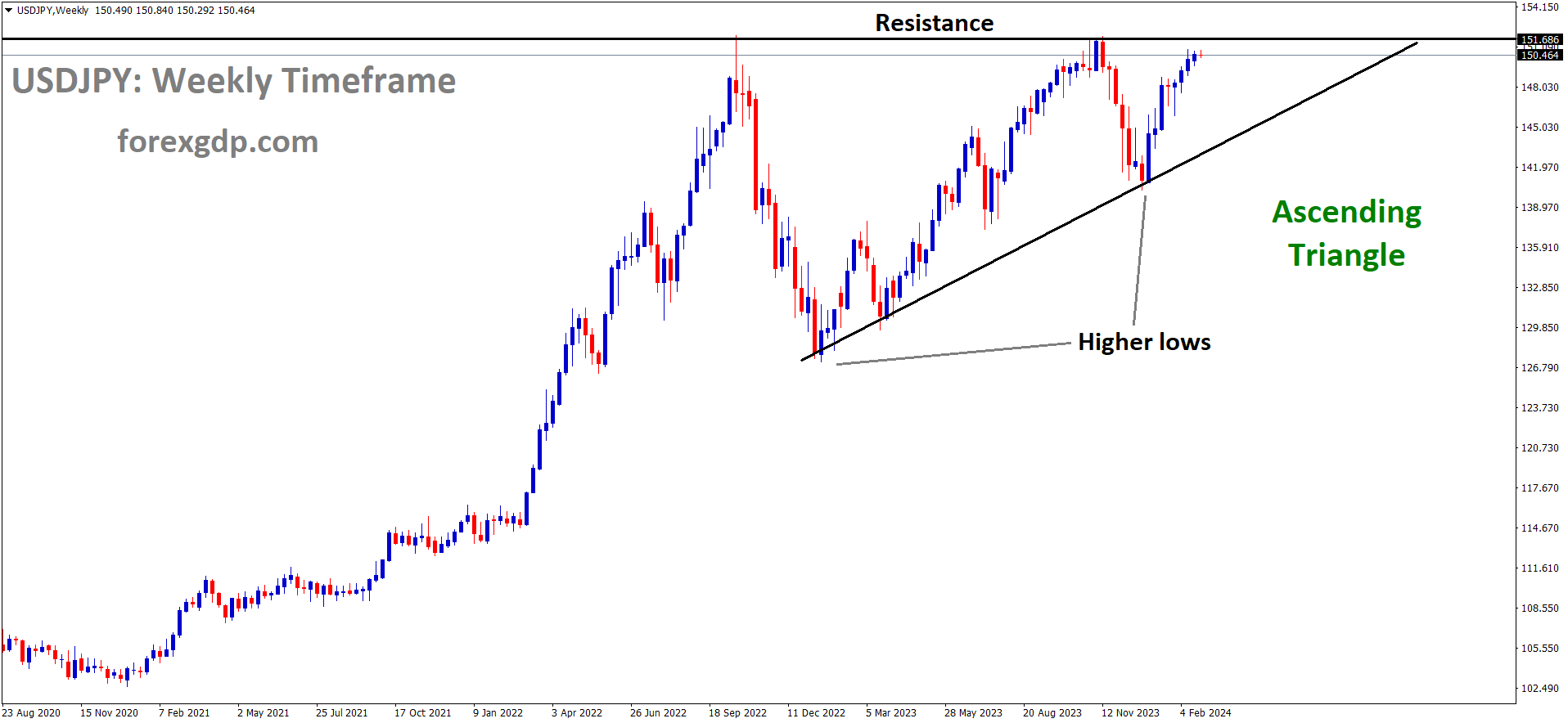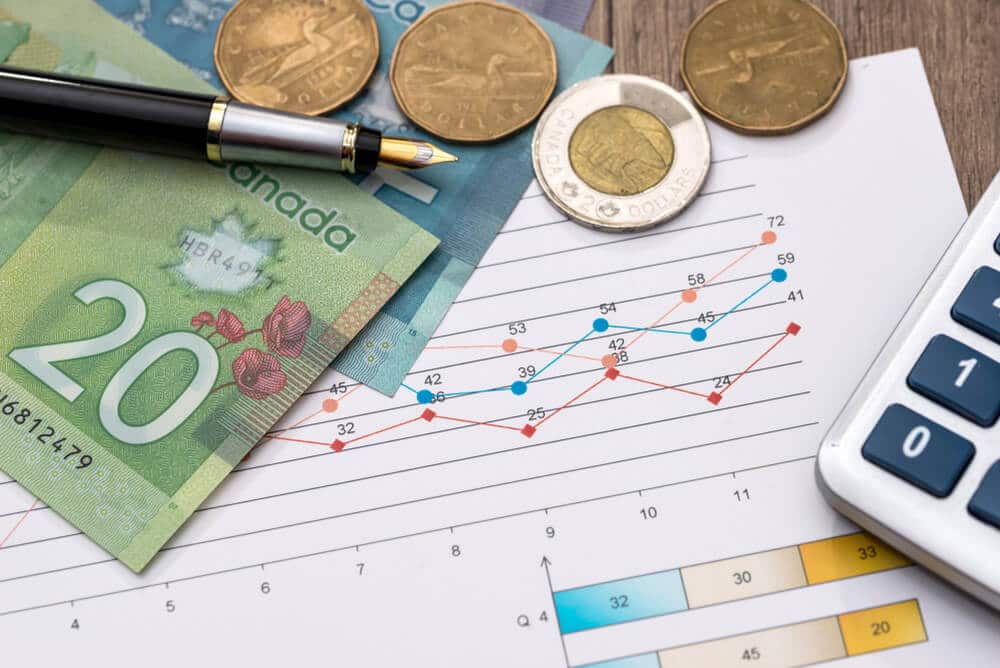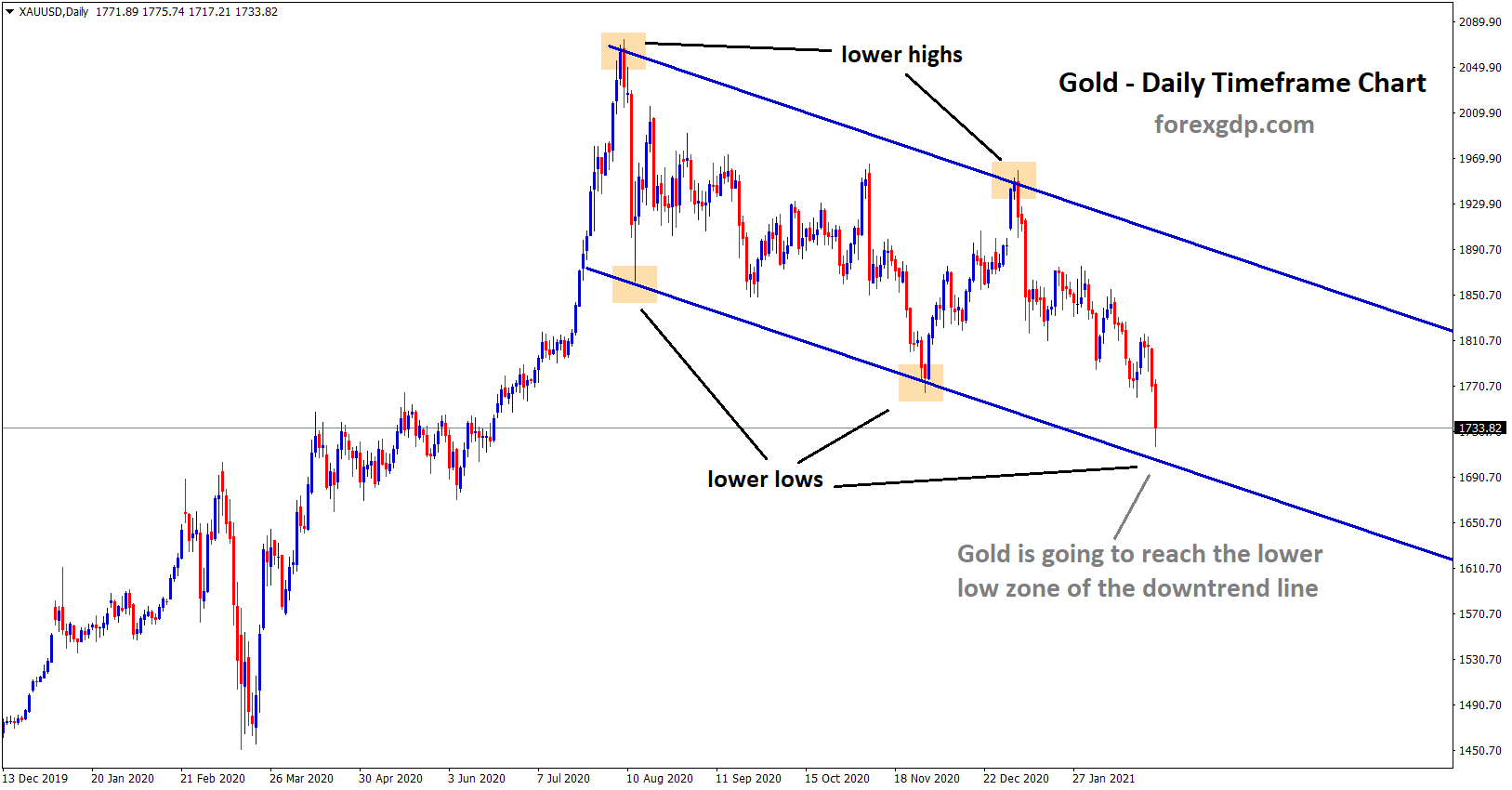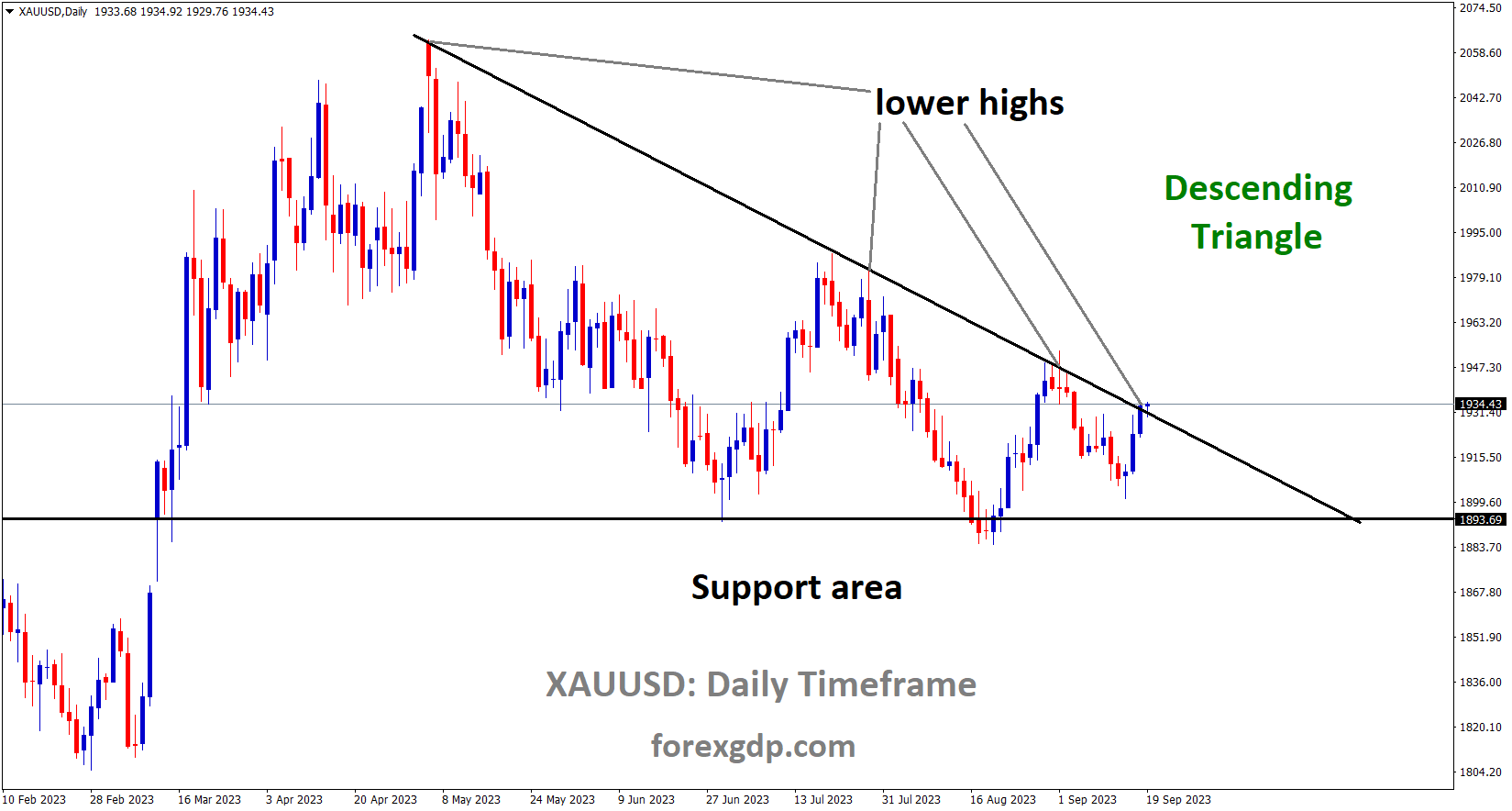JPY: Japan’s January YoY CPI: 2.2% vs. 2.6% prior
Japan CPI data for the month of January came at 2.0% versus 2.3% printed in December, beat the expected 1.9% lower level. The reading shows the hopes of Bank of Japan will deliver the rate hikes in April month meeting.
Japan’s January YoY National Consumer Price Index dropped to 2.2% from December’s 2.6%, as per the latest data from the Japan Statistics Bureau. Additionally, the National CPI excluding fresh food stood at 2.0% YoY in January, down from the previous 2.3%.
JPY: Japan’s Inflation Surpasses Expectations; End of Negative Rates on Horizon
Japan CPI data for the month of January came at 2.0% versus 2.3% printed in December, beat the expected 1.9% lower level. The reading shows the hopes of Bank of Japan will deliver the rate hikes in April month meeting.
USDJPY is moving in uptrend and market has reached higher low area of the pattern
Japan’s core consumer inflation, although slowing for a third consecutive month in January, exceeded expectations and remained at the central bank’s 2% target. This outcome sustains the anticipation that negative interest rates may come to an end by April. The 2.0% rise in the core consumer prices index (CPI) was a deceleration from the 2.3% increase in December, as indicated by data from the internal affairs and communications ministry on Tuesday. This underscores the belief that diminishing cost-push inflation from commodity imports could mitigate the impact of rising living costs.
Nevertheless, the increase surpassed the median market predictions of a 1.8% rise, reinforcing the belief that substantial salary increases will be proposed by major corporations during the labor-management wage discussions on March 13. This development could set the stage for the Bank of Japan (BOJ) to discontinue negative interest rates in March or April. Marcel Thieliant at Capital Economics pointed out, “The January CPI leaves open the possibility of the BOJ hiking its policy rate at the March meeting if preliminary Shunto results, due a few days before the meeting, are encouraging.” Shunto refers to the Japanese term for the wage talks.
Thieliant further stated, We maintain that an April hike is more probable. In February, inflation is expected to surge significantly above 2%, driven by base effects from the initiation of energy subsidies a year ago. This would enable the Bank to present a more compelling narrative, emphasizing the enduring strength of inflation.
Japan’s core consumer price index encompasses oil products while excluding fresh food prices. The deceleration can be attributed, in part, to a significant decline in energy costs. This downturn reflects the base effect of the sharp rise observed last year and the impact of government subsidies aimed at restraining gasoline and utility bills. It indicates a diminishing cost-push pressure that had previously maintained core inflation at or above the Bank of Japan’s (BOJ) 2% target since April 2022.
Looking ahead, analysts emphasize that the crucial factor is whether wage increases surpass inflation sufficiently to empower households with purchasing power. This scenario would enable companies to consistently transfer costs, maintaining inflation persistently at the Bank of Japan’s (BOJ) 2% target. The “core core” index, which excludes both fresh food and energy prices and is closely monitored by the BOJ as a narrow gauge of the overall price trend, recorded a 3.5% year-on-year increase in January, following a 3.7% rise in December.
Regarding prices, today’s data does not present any obstacles to the Bank of Japan’s (BOJ) trajectory towards ending negative rates, anticipated to occur in April, according to Izuru Kato, Chief Economist at Totan Research. However, Kato acknowledges the BOJ’s challenge in maintaining a delicate balance, considering two consecutive quarters of gross domestic product (GDP) contraction and subdued private consumption.
Additionally, he points out the stagflation-like situation arising from a weak yen, characterized by a combination of low growth and high inflation.
JPY: Japan’s Core Inflation Hits 22-Month Low
Japan CPI data for the month of January came at 2.0% versus 2.3% printed in December, beat the expected 1.9% lower level. The reading shows the hopes of Bank of Japan will deliver the rate hikes in April month meeting.
Japan’s Core Inflation Hits 22-Month Low
USDJPY is moving in Ascending channel and market has reached higher low area of the channel
In January, Japan’s core inflation declined for the third consecutive month, reaching its lowest level in 22 months, aligning with the central bank’s price stability target. The core consumer price index, excluding fresh food, increased by 2% YoY, down from a 2.3% gain in December, as per data released by the Ministry of Internal Affairs and Communications on Tuesday.
The weakening domestic demand, influenced by stagnant wages and rising prices, contributed to the economy contracting for the second consecutive quarter in October-December. Despite this, the Nikkei Stock Average is reaching record highs, potentially providing the Bank of Japan (BOJ) with momentum to end its negative rate policy.
BOJ is widely expected to conclude its negative interest policy introduced in January 2016 in the coming spring, with around 90% of economists surveyed by QUICK, a Nikkei affiliate, predicting a policy shift in March or April.
In January, hotel charges grew by 26.9%, a decrease from the 59% gain in December. Conversely, electricity bills fell by 21%, and overall energy prices declined by 12.1%. The headline inflation rate grew by 2.2%, while the core-core index, excluding fresh food and energy, saw a 3.5% gain.
Economist Kanako Nakamura from the Daiwa Institute of Research attributed the slowing inflation to “particular causes” rather than indicating a “fundamental” trend. The decline in hotel fees contrasts with the previous January’s increase, influenced by government travel subsidies and a temporary decline in inbound visitors following the Noto earthquake in January.
Nakamura explained that the drop in energy prices is a result of the high levels seen last year, anticipating a temporary rise next month as electricity and energy subsidies conclude.
USDJPY is moving in Ascending Triangle and market has reached resistance area of the pattern
Real wages, accounting for inflation, saw a 2.1% YoY drop, marking the 21st consecutive monthly fall. The ongoing spring wage negotiations, known as shunto, between unions and employers are expected to play a significant role in BOJ’s decision-making. Nakamura suggests that the BOJ is likely to base its decisions on fundamental changes in wages and inflation rather than single-month trends.
Don’t trade all the time, trade forex only at the confirmed trade setups.
Get more confirmed trade setups here: forexgdp.com/buy/

